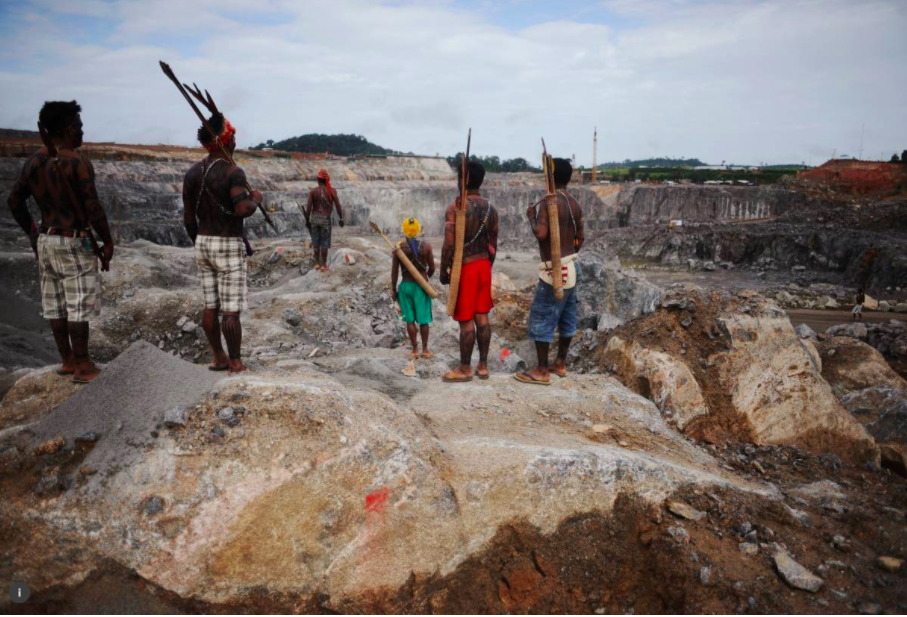By Sônia Guajajara (Guajajara), Executive Coordinator for the Articulation of Indigenous Peoples of Brazil (APIB); Vicky Tauli-Corpuz (Kanakaney-Igorot), former UN Special Rapporteur on the Rights of Indigenous Peoples; Gregorio Mirabal (Wakuenai Kurripaco), General Coordinator of Indigenous Organizations of the Amazon Basin (COICA); and Peter Seligmann, co-founder and CEO of Nia Tero.
If leaders are serious about tackling climate change, they must invest in the best guardians of ecosystems: indigenous people
At President Biden’s climate summit starting on April 22, world leaders will debate how best to reduce carbon emissions, “create good paying jobs,” and “advance innovative technologies.” These politically popular climate ambitions are worthwhile, but the global public wants results.
If leaders are serious about removing carbon from our atmosphere, they must invest in the communities that offer the one untapped evidence-based solution for conserving the planet’s vital ecosystems: indigenous people outperform all others in protecting carbon-absorbing forests and waters that are indispensable to slowing the temperature rise that threatens life on the planet. For that reason alone, indigenous leaders must have a seat at all climate negotiations, and their governments must scale up recognition of their territorial rights.
Despite living worlds apart, we speak with one voice in calling on our leaders to heed the science and listen to those who live in balance with nature. We are three indigenous leaders from the forests of the Amazon and the Philippines and the CEO of Nia Tero; we want our leaders to know that addressing the plight of indigenous people is more than a social justice issue.
It’s a matter of survival for all of us. Governments and businesses are driving indigenous territories toward ecological collapse. Restoring indigenous people’s sovereignty over their lands and waters is our best chance of saving these ecosystems—and our planet.
The world’s largest contiguous rainforest, the Amazon is vital to meeting the primary aim of the Paris Agreement—to limit global warming to 1.5 degrees Celsius. And yet, across the nine nations of the Amazon basin, political leaders allow the forests to be mined for gold, drilled for oil, and stripped to make way for agribusiness, while denying indigenous people the right to decide the fate of their own lands.
After five centuries of colonization, genocide, and land grabbing, indigenous Amazonians retain their ability to maintain a vast portion of the planet. They do so while confronting existential threats that put at risk their lives and the fate of the forests they see as inseparable from themselves.
In 2020, farmers torched an area of primary forest the size of Massachusetts. Researchers reported last month that deforestation is causing the Amazon to emit more greenhouse gases than it absorbs.
Emissions on indigenous territories are far less, and yet traditional forest peoples face persecution for defending their lands, and their forests are increasingly under siege. It is a pattern playing out on every continent except Antarctica. Left unchecked, the consequences will be catastrophic.
Indigenous cultures hold a sacred, reciprocal relationship with the ecosystems they inhabit and protect. What if industrial societies respected trees and rivers as parents and siblings. Imagine how that might impact humanity’s carbon footprint.
Last year, a study published in the Proceedings of the National Academy of Sciences reported that Amazonia’s indigenous people protect forest carbon more effectively than any other landholder in the region. According to their findings, lands managed by indigenous people emit six times less carbon than publicly protected lands—and 36 times less than those that are privately owned.
Across the Amazon, indigenous stewardship annually prevents more than 200 million metric tons of carbon dioxide from reaching the atmosphere. By setting the social cost of carbon at $50, as recently cited by the Biden administration, the avoided carbon is worth more than $10 billion.
And what does it cost to make the contributions of indigenous peoples sustainable? Just to secure their territories in Brazil, would be a little less than $1 per hectare, per year—or $190 million a year—according to economists at the University of Brasília.
Assuming a modest (3%) rate of return, investing in a $6-billion fund controlled exclusively by Indigenous peoples would ensure their stewardship of the ecoregion in perpetuity. (For a sense of scale, last year’s climate disasters cost the United States $1.875 trillion.) Humanity’s fate depends on indigenous people’s ability to safeguard the ecosystems that keep our planet livable. As world leaders gather at President Biden’s climate summit to debate next steps, they should remember an old teaching of the Dene, First Nation people of Canada’s boreal forest: “We are the land,” they say, “and the land is us.”
Originally posted at Thompson Reuters Foundation.

